This is Part 2 of FA member James Dunn’s story about preparing for his first multi-pitch climb outdoors. If you missed Part 1, read that first here: Journey to Multi-Pitch: Part 1. Then read on to see how all of James’ hard work and training paid off!
On June 5, 2019, three friends and I set out on a climbing trip to Boulder, Colorado. The trip had been planned over 8 months previously, and I’d spent that time training to be able to keep up with my group. As excited as I was about doing multi-pitch routes, I still feared slowing them down, or worse, finding a spot I couldn’t get past.
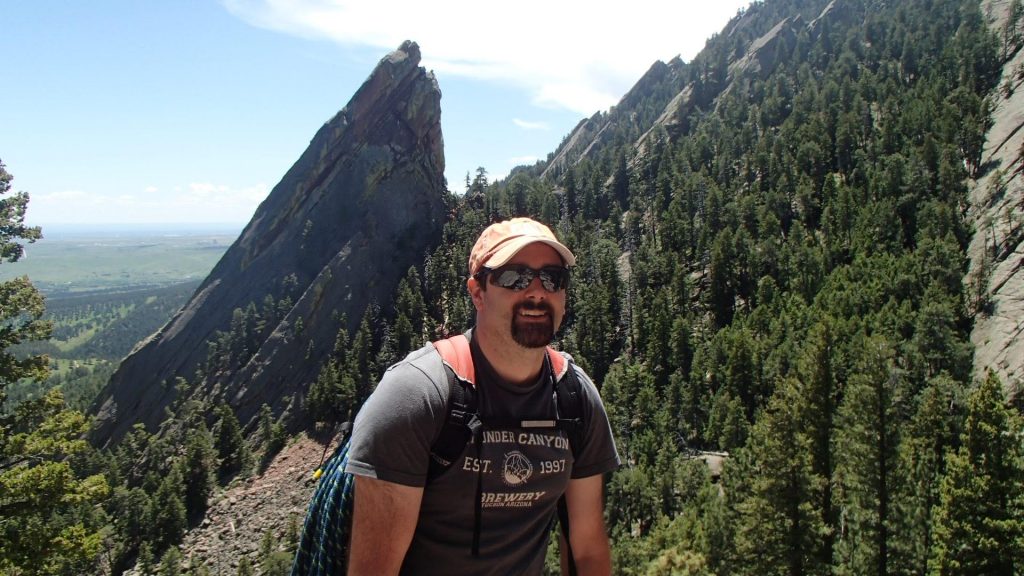
The drive out to Boulder from Peoria is as long as it is flat, but good company helps pass the miles. We talked about the world record for climbing Flat Iron 1, which, as it turns out, is 30 minutes and 19 seconds round-trip (car door to car door) set by Kyle Richardson. We arrived as the sun was setting and thunderstorms were rolling in. I was a bit worried about what the conditions would be like the next morning. We had agreed to get an early start because even with guides, you can’t reserve routes.
We arrived and met our guides Ian Fowler and Wes Fowler (no relation), two members of the Colorado Mountain School. We organized our packs, applied sunscreen, and made sure we had all the rope and locking carabiners we needed. It was pleasantly cool, and I was excited and nervous. We reached the base and donned our climbing shoes, helmets, and harnesses. I packed my hiking shoes in with the water bottles and snacks in my backpack (which would turn out to be my biggest regret of the day).
We split into two groups of three and four. After reviewing communication, which is very important to everyone’s safety when climbing multi-pitch, we both tied in, and I belayed Wes. As he climbed, he used cams and nuts to set up points of protection and to build an anchor at the top of the first pitch. Once he had secured himself to the anchor, I heard him call down, “Team Kitty, off belay,” to indicate he had set up the anchor point. I was amused that he had chosen my wife’s nickname for our team name. I undid my GriGri and shouted up, “Team Kitty, off belay.”
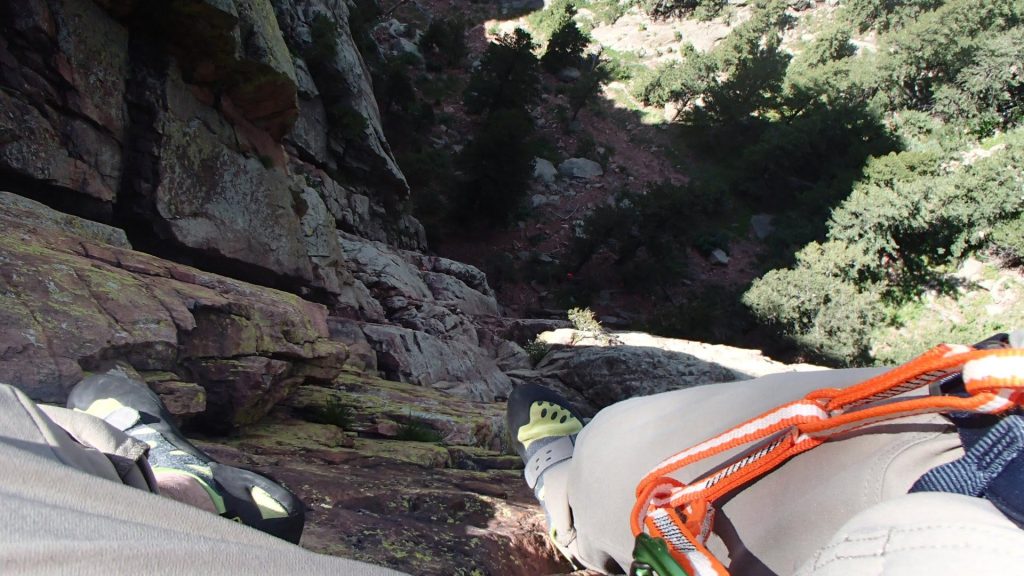
I stared at the rock looking for features and was dismayed to see absolutely nothing. Wes had told us we would need to rely on friction and to keep our center of gravity over our feet to provide the highest amount of traction. Our hands were just to steady ourselves. The slack in the rope tightened up and I heard, “Team Kitty, on belay.” I placed my foot against the blank face and started applying weight. I slipped. Then I noticed a small nub the size of a marble and put my toe against it. I pushed up and raised onto the wall. After finding a few more minuscule features, I got the hang of using pressure only and began making my way up at a good pace. Although F1 is a big slab, it does have some interesting features like large flakes to climb up and around. The last stretch features a downclimb followed by a vertical route up an arete to the peak, which was probably my favorite part of the climb.
The view from the top was, of course, amazing. We waited for the other group while we signed the logbook and took pictures. We had made it in just around four hours, and not once did I feel like I had slowed us down. It was an incredible feeling. The only thing giving me any discomfort was my shoulders, and that was from carrying the backpack (my one regret), not the climb itself. We rappelled down a hundred feet off the back of the peak and hiked back to our cars. This was the toughest part. By the end, my legs and shoulders were in a lot of pain. I was tired and very hot.
We drove to Central Park and dunked our feet in the refreshing waters of Boulder Creek. Even in June, the water was so cold I could keep them in for less than a minute each time. After cooling down a bit, we headed to Avery Brewing and went on their tour. It was a fantastic tour and a great way to unwind. The rest of the day is a blur. I remember my shoulders were in a lot of pain, and I was worried about the rest of the trip. When we went back to the hotel, I sat on the bed and passed out at around 4 p.m. and slept until the next morning when we set out to tackle Eldorado Canyon.
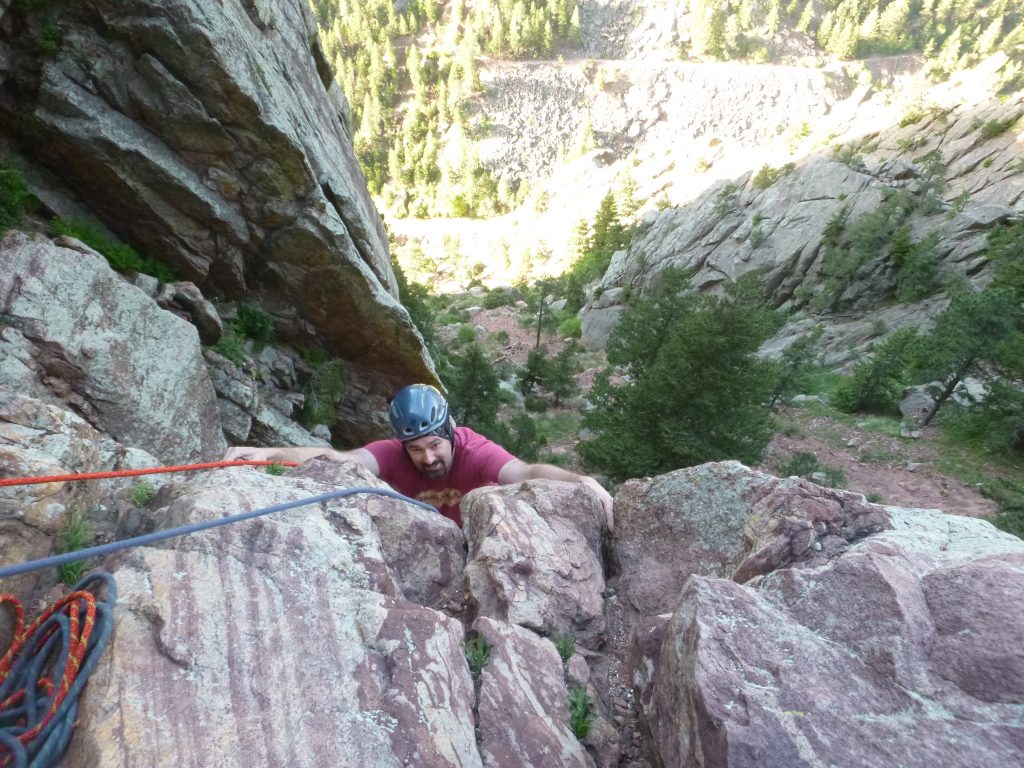
After some discussion the next morning, we decided to split up. One group would climb the Yellow Spur (5.9+) and the other would climb Rewritten (5.7). I elected to go with the latter. I also decided to lose the backpack. I jammed my pockets with protein bars, dried fruit, and sunflower seeds. Then I clipped my shoes to the back of my harness. The one thing I was missing was a good water bottle with a carabiner.
Rewritten was a much more vertical climb than F1 and much of my training actually helped. Again, the guides led the route and we top-roped up after them and collected the cams and nuts. At the top of pitch three, Ian informed us that we were in for a surprise as he brought our attention to a lateral crack off to the left. Below the crack was nothing but flat rock. “You’re going to use hero hands and grip the crack while you smear with your feet,” he told us.
The first of the group handled it, no problem. I started in, but my body was up too high and my elbows were bent. It was amateurish bad form, and I collapsed off the wall. Regaining my hands from a lower purchase, I was able to grip and shuffle straight-armed along the crack to where the route goes vertical. This was an excellent photo op, and I didn’t want my other friend to miss out, so I found this little one-foot ledge and parked myself. I could see out across to the other side of the canyon, and I looked down 300 ft. to the base between my dangling legs. I snapped some pictures of the view and my friend flawlessly navigating the crack
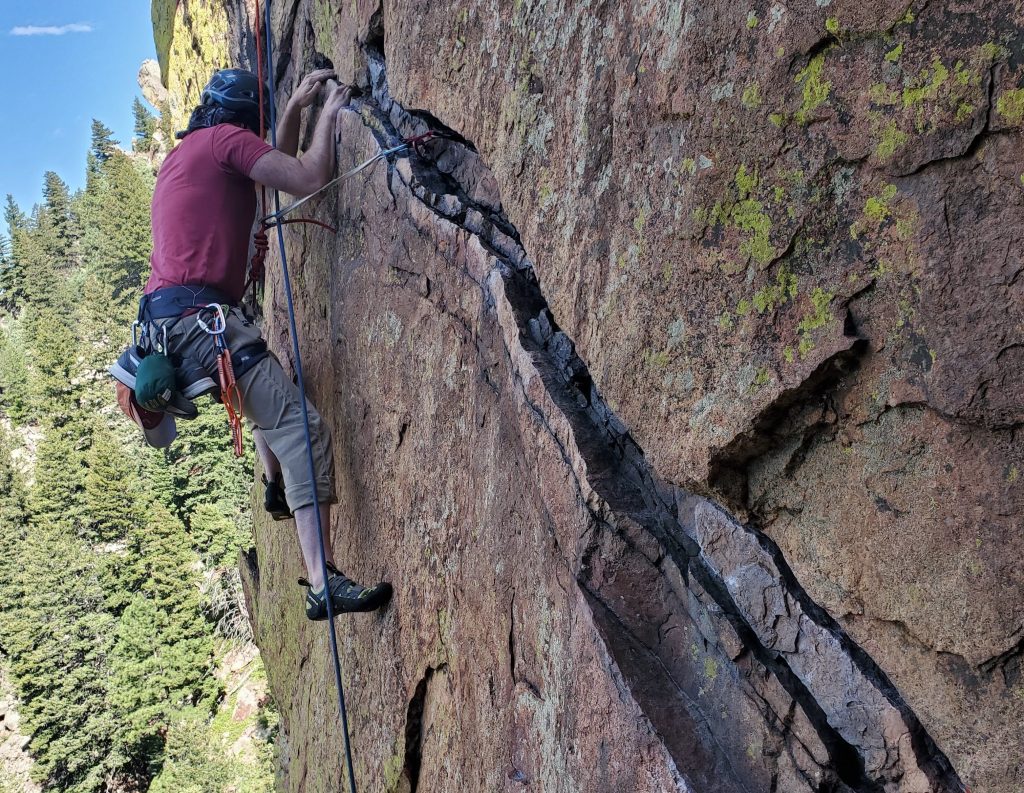
The final push was on an exposed arete. Again, it was just the right amount of challenge. My shoulders felt much better without the pack. The feeling of being so exposed as you’re climbing is really indescribable. We summited around the same time as the other group and grabbed some good pictures of them celebrating on the other peak. Unfortunately, the trip back down was really treacherous. There were two sections where our guide used ropes to lower us. At one point, I ended up slipping on a wet rock and bashing my shin. I was lucky that it was a minor injury, and we made it back with no other problems.
That afternoon we had a late lunch with our guides at Southern Sun Pub. We made some future plans with the guides for 2020 and talked about our final day of unguided sport climbing. I felt very ‘along for the ride’ at that point. I was worried we might get into something too difficult for me. We left our guides after lunch and headed to Neptune Mountaineering, a large outdoor outfitter. I strongly suggest making this your first stop. I bought a collapsible water bottle for the next day’s climb. We shopped around and enjoyed their coffee/beer cafe.
The next morning, we headed for Clear Creek Canyon. There was a rocky hike up the creek/river from the pull-off area. We located our route, Playin’ Hooky (5.8). I elected to belay first, even though I was anxious to lead. The first pitch had a very fun overhang, which I made it over without any trouble. The area was just majestic. The river runs right past the base of the cliff, and the scenery is breathtaking. Unfortunately, the sounds of the water make communication difficult, and occasionally we had to help relay messages about people being on or off belay to their climbing partners.
When I joined my group at the top of pitch one, they gave me a refresher on belaying from an anchor point. This was the moment I was waiting for. As I headed up, I noticed that the bolts were farther apart than I was used to. It was a bit unsettling, but I was able to find good features when clipping. There were a few moments where I was a long way above the last bolt, when my heart would start to race. My grip felt very strong, though, and I pulled through. I also noticed that my finger, which was still recovering from a pulley injury, was starting to give me some trouble.
I got to the anchors and set up my belay. After I belayed my group, my friend recommended I borrow climbing tape and wrap my finger. I formed a cross under the joint and then wrapped around the finger bones a few times to keep it in place. All went smoothly, and we continued up the cliff. We had split into the same groups as the day before, but elected to all do the same route. It was nice to all be hanging out together for our final day, snapping pictures and cheering each other on.
When we all made it up to the top anchor, it was very crowded, and we didn’t wait long before rappelling down. This was probably the most dangerous part of the weekend. Not so much the actual rappelling, but anchoring, rope management, cleaning anchors, descending, repeating. There is just a lot that can go wrong. It was a bit crowded, and at one point we anchored ten feet above a ledge full of people who were heading up the same route. Eventually, we made it back down, and the climbing was over.
My first multi-pitch adventure was such an incredible experience. I would say once-in-a-lifetime, but after doing it once, there’s no way I won’t be doing it again someday. I’m completely hooked on it. The preparation I did helped make my first experience a success. Now I need to keep working at improving so the next time I can climb more challenging routes.
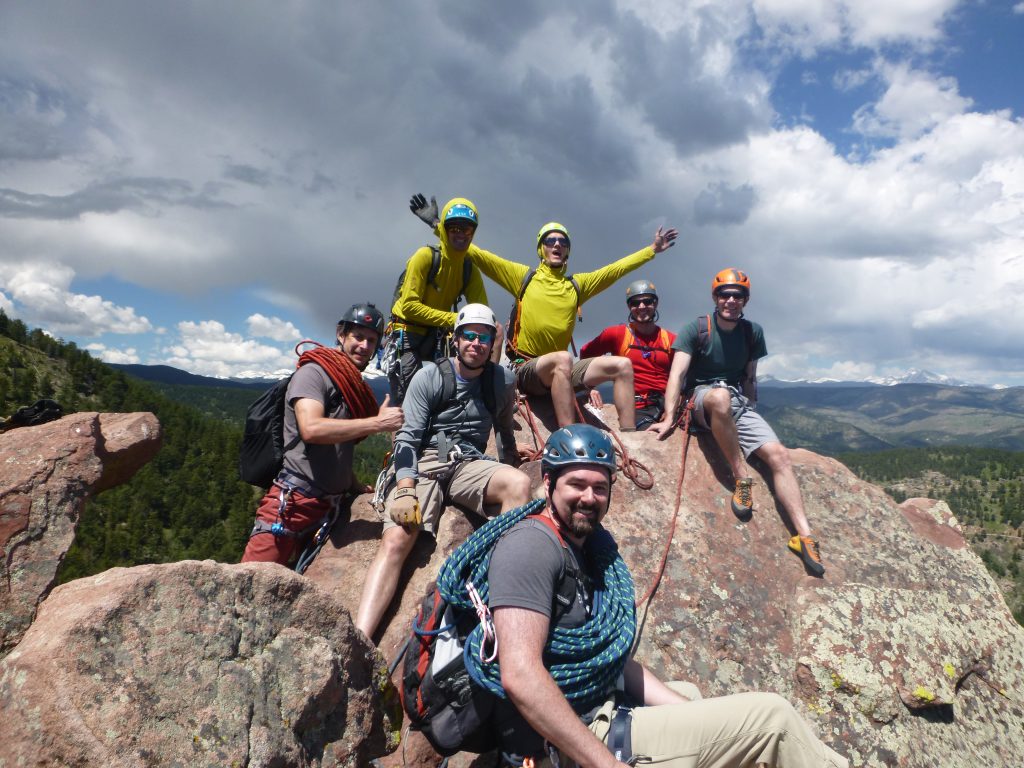
James Dunn is a member at First Ascent Peoria. Give him a fist bump if you see him around the gym for accomplishing his goal of climbing his first multi-pitch route!
